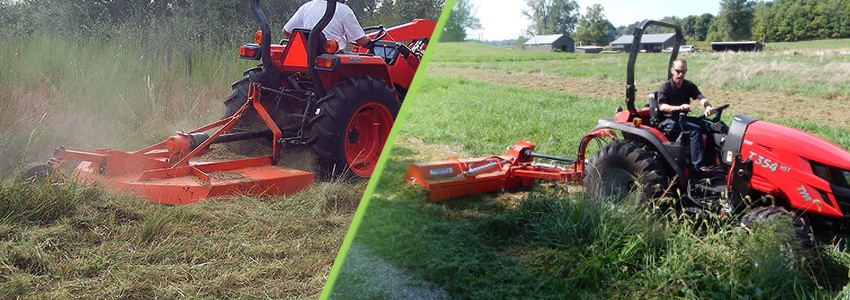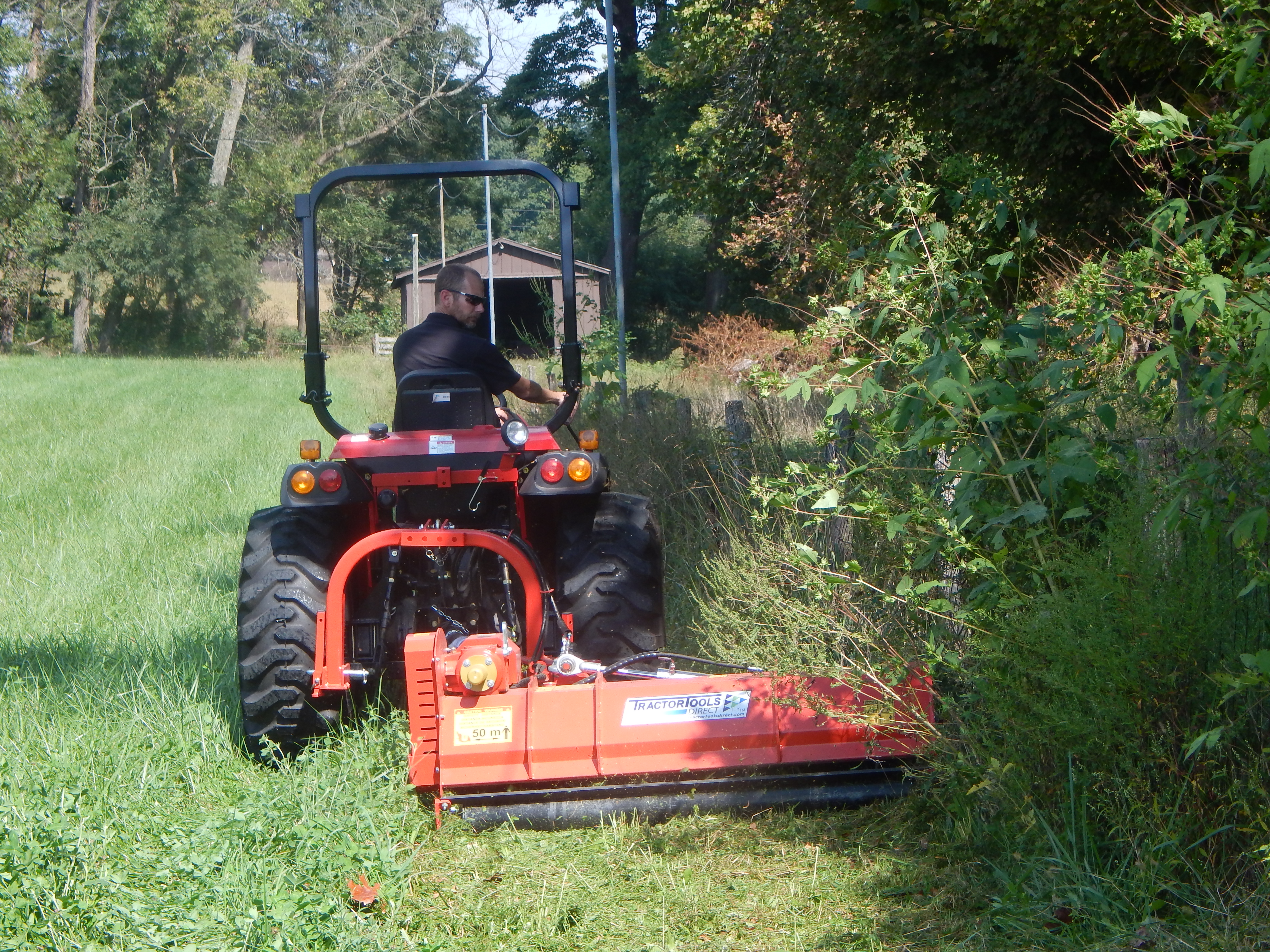Brush Hog or Flail Mower: Which One Is Best For My Operation?

In our communications with customers, we often field questions about the differences between brush hogs and flail mowers. Many people think that the two types of mowers are completely interchangeable; however, each type of mower is different enough to be suitable for different mowing conditions.
To understand the uses of each type of mower, it is necessary to have a basic understanding of how each mower works. Brush hogs are rotary mowers. This means that cutting is performed by horizontally spinning blades. In some rotary mowers, like many lawnmowers, the blades are regularly sharpened. However, since a brush hog is designed to work in tough conditions, its blades would dull ridiculously quickly. Therefore, a brush hog’s blades are heavy, thick and dull and rely on momentum to whack through growth up to an inch thick.
A flail mower cuts with “ flails”, y- or t-shaped blades, attached to a long shaft. This shaft, powered through PTO drive, runs parallel to the ground, and as it rotates these blades shred biomass. Cut material is held under the mower for a longer time allowing it to be further shredded, and then the finer clippings are distributed evenly across the full width of the mower. This ensures that clippings do not clump and pile, potentially killing regrowth and eventually leaving bare spots in the field.
Brush hogs are great for mowing large over-grown grassy areas and can tackle tall, thick grass with ease. They can be run at fairly high ground speeds, meaning more acreage can be covered in a given time. This increased production comes at the cost of a lower quality cut and the potential for clumping and piling of clippings. Brush hogs with their simple blades are also easy to maintain. However, another downside of the brush hog pertains to safety. With its rotary motion, objects can be thrown in any direction; therefore, mowing in areas with debris—rocks, trash, sticks—should be undertaken with great caution.
"Flail mowers are a better choice for areas of overgrown brush and vines, and their design reduces the risk of injury from flying debris."

Flail mowers excel at cutting vines and brush. This makes them the perfect choice for areas that are not only grassy but also overgrown with other types of vegetation. Their design does a nice job of mulching what is cut thus returning nutrients to the soil. Adding to their versatility, some models can be extended to the side and angled to cut ditches and banks. Their linear cut and design also reduces the risk of thrown debris making them a better choice for mowing areas with rocks, woody material and even litter, or anywhere people may be present nearby. If damaged, the flails are simple to replace.
In conclusion, brush hogs tend to be a better choice for large overgrown grassy fields and can handle such conditions with greater speed, though lower quality, than flail mowers. However, flail mowers are a better choice for areas of overgrown brush and vines, and their design reduces the risk of injury from flying debris. Additionally, the flail mower will give a better-quality cut and will disperse the clippings more evenly. When choosing the best mower for your operation be sure to keep these factors in mind.
Recent Posts
-
Boost Pine Straw Production Efficiency with Ibex Mini Round Balers
At Tractor Tools Direct, we're known for our high-quality hay equipment tailored for small farms …Dec 8th 2025 -
How to Winterize Your Tractor: Essential Maintenance Tips to Protect Your Investment
Farm equipment is one of the most valuable investments a farmer can make. At Tractor Tools Direc …Dec 1st 2025 -
Farm Tax ID Explained: Benefits, Eligibility, and How to Apply
As the end of the financial year approaches, it's a great time for small farmer operators to rev …Nov 12th 2025




